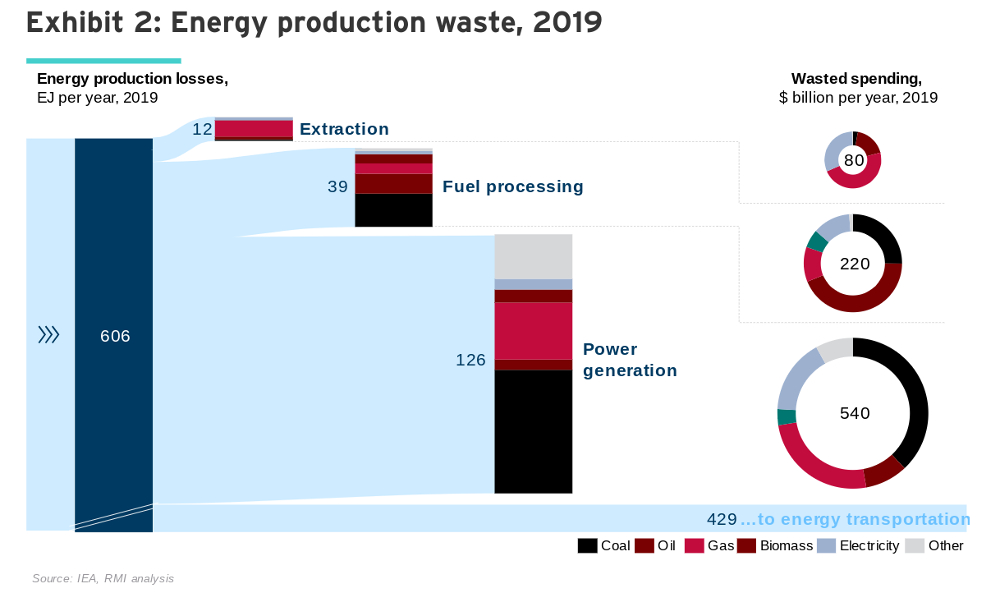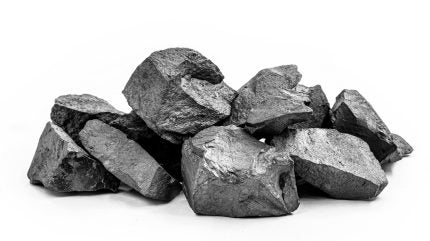Sign up for daily news updates from CleanTechnica on email. Or follow us on Google News!
Herewith, a primer on energy efficiency, brought to you by the folks at RMI, formerly known as the Rocky Mountain Institute. Their premise is that we waste about two-thirds of all the energy in the coal, oil, and methane we extract from the Earth every year. We don’t realize this as we motor along in our new Belchfire 5000 or turn up the thermostat when the temperature drops in December, because it is second nature to us. It’s what we do and everybody we know does the same thing, so it must be OK, right? Wrong, octane-breath. As your mother asked you a thousand times when you were young, “If Billy jumps off the roof, does that mean you should jump off the roof too?”
To start this lesson on energy efficiency, we need to get you out of your comfort zone and take a look around with fresh eyes. Let’s say you invite a few friends to come watch the Super Bowl at your house. One brings a case of beer to the celebration, but before the game begins, you open 16 of the bottles of beer and pour them down the drain. Another friend brings a large meat lovers pizza with extra cheese cut into 12 slices. While you are pouring beer down the sink, you open the pizza box and toss 8 slices into the garbage. Pretty stupid, huh? but that is exactly what we do with the energy from the fuels we extract every year. Using the beer and pizza analogy, that is pretty stupid, too, wouldn’t you agree?
Energy Efficiency 101
In the introduction to the subject of energy efficiency, RMI says,
“Today’s fossil energy system is incredibly inefficient. Almost two-thirds of all primary energy is wasted in energy production, transportation, and use, before fossil fuel has done any work or produced any benefit. That means over $4.6 trillion per year — almost 5% of global GDP and 40% of what we spend on energy — goes up in smoke due to fossil inefficiency.
“The winds are changing, however, as fossil technologies are being undercut by more efficient alternatives. End use efficiency is driving out fossil fuels, reinforced by three new tailwinds that upend the energy landscape — renewable electricity, localization, and electrification. These drivers will allow us to drastically cut down on energy waste and phase out fossil fuels.”
Today’s energy system is incredibly inefficient, RMI points out. We waste almost 400 exajoules of all the energy going into our energy system. A joule is a unit of energy equal to the work done when a force of one newton acts through a distance of one meter. It is also a unit of electrical energy equal to the work done when a current of one ampere is passed through a resistance of one ohm for one second. Pretty small stuff, in other words. An exajoule, on the other hand is big stuff. It represents 10 joules to the 18th power. Another way to put it is that one exajoule is equal to 277,778 gigawatt-hours (GWh) of electricity. In 2019, humans extracted energy equivalent to 606 exajoules (EJ), but only about 200 EJ was put to productive use. The rest — around 400 EJ — was wasted, mostly as heat.
The main culprit for this energy inefficiency is the widespread use of fossil fuels, RMI says. The majority of energy losses are driven by the inherent inefficiencies of producing and delivering fossil fuels (177 EJ per year), transportation (19 EJ per year), and use (183 EJ per year). The standout waste is from fossil fuel power plants and internal combustion engines. These two technologies combined are responsible for almost half the energy waste globally.
Lack Of Energy Efficiency Creates Vulnerability

Fossil inefficiency is fossil fragility, RMI says. Inefficient energy use is vulnerable to more efficient alternatives, as competition by more efficient solutions can deliver more or better services, more conveniently, at lower cost. There is nothing new under the sun. Fossil fuel technologies themselves rose to prominence a century ago through competing on efficiency, pushing out less efficient technology and fuels along the way. That scenario is happening again. Both more efficient end use — electric cars and heat pumps — and new clean supply technologies — solar and wind — all undercut fossil fuels where they are at their weakest — rampant inefficiency.
The Energy Journey
There are five stages that a unit of energy passes through. Initially, it is extracted as primary energy, such as coal and crude oil from the earth. It is then processed into final energy that can be used more easily, such as gasoline and electricity, which is transported and sold to end-users. These users convert this final energy into useful energy through devices like boilers and engines, turning the final energy captured in fuels into functional forms such as hot water or a moving vehicle. This useful energy delivers energy services across society, such as heating a home or transporting goods. Finally, energy services are used to create value and prosperity for the consumer — comfort, mobility, and illumination — turning energy into an improvement in prosperity, quality of life, and human satisfaction and happiness.
Total efficiency is actually even lower because there are losses between useful energy and energy services and between energy services and prosperity. For instance, some 30% of construction material — steel and concrete — is wasted on a typical construction site globally. In the US, some 35% of truck miles are driven empty to new pickup locations, which could largely be eliminated with better logistics.
The Financial Cost Of Inefficiency
In financial terms, the loss of 379 EJ per year means we waste some $1 trillion per year in energy spending on the supply side, and another $3.6 trillion on the demand side. That adds up to $4.6 trillion per year, which averages out to about $600 wasted annually per person globally. This represents 40% of total global spending on energy, or about 5% of global GDP, which is roughly double the annual investments into the energy system every year.
It takes energy to make energy. The three key drivers of energy waste in production processes are extraction (getting raw fuels out of the ground), fuel processing losses (turning raw extracted fuels into ready-for-use molecules), and power generation losses (turning molecules into electrons).
Power generation drives the largest loss by far — 126 EJ per year, worth about $540 billion. Thermal losses of coal and gas power plants make up the majority of this wasted energy — about 60 EJ per year from coal and 30 EJ per year from gas power generation. Other losses derive mostly from fossil extraction and processing steps, such as oil refineries, coal mines, and gas extraction. This wastes another 51 EJ worth $300 billion per year. A smaller but not insignificant 19 EJ per year is lost in transporting energy from supply to demand centers. This corresponds to wasting some $200 billion per year.
Across production, transportation, and use, fossil fuel technologies are the main drivers of energy waste. Over 75% of energy losses are directly attributable to fossil technologies, with fossil fuel-fired thermal power plants and internal combustion engines leading the way. These two technologies combined are responsible for almost half the energy waste globally.
Fossil fuel technology not only has poor energy efficiency, it also produces a lot of other waste byproducts. Burning fossil fuels emits 35 of the total 37 gigatons (Gt) of CO2 emitted each year and is responsible for another 3 Gt equivalent in methane emissions. Fine particulate matter — particles smaller than 2.5 microns in size — are responsible for over 5 million deaths per year and are directly attributable to burning fossil fuels.
Inefficiency By Design
The incredibly poor energy efficiency of fossil fuels is partly by design, RMI says. For a century, the global economy primarily prioritized energy volume-add, not value-add, and invested in boosting energy sales, not the value each unit of energy adds. We invest mostly in energy quantity, not quality and efficiency.
This strategy has led to a ballooning energy system, fueling super profits for the fossil fuel industry over the past century. It also led to rampant inequities, and a world where over 60% of energy goes to waste while some hundreds of millions live in energy poverty. But this strategy has also made the fossil fuel industry increasingly vulnerable. Inefficient fuels can be outcompeted by leaner, more efficient alternatives.
This very dynamic drove the success of fossil fuels over the past 150 years. In the UK, more efficient coal outcompeted biomass and then more efficient methane outcompeted coal. In global transport, more efficient oil outcompeted coal and in steel, more efficient basic oxygen furnaces outcompeted open hearth furnaces. This will happen again, RMI predicts. “There is a target on the back of the fossil system, worth 400 EJ in energy and over $4.5 trillion in sales per year. More efficient alternatives are finding inroads to capture this value and push out fossil fuels.”
3 Energy Efficiency Gains
RMI believes 3 new energy transformation changes will have a significant impact on the energy system this decade. They are:
- Renewables — Wind and solar energy can be generated almost entirely without losses, as they require effectively no extraction or processing energy, nor suffer major thermal losses like fossil fuels.
- Localization — Locally generated renewables eliminate the need to transport fuels around the world. Generating electricity at the point of demand, such as with rooftop solar, avoids the need to transport energy altogether.
- Electrification — Technologies such as heat pumps and electric vehicles eliminate most wasted energy and are two to four times more efficient than natural gas boilers or conventional cars respectively.
Energy efficiency is at the heart of the coming energy transition, RMI concludes, and will emerge as the deciding factor in the transition away from fossil fuels, a transition that is already well underway.
Have a tip for CleanTechnica? Want to advertise? Want to suggest a guest for our CleanTech Talk podcast? Contact us here.
Latest CleanTechnica.TV Videos
CleanTechnica uses affiliate links. See our policy here.





